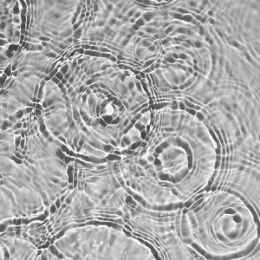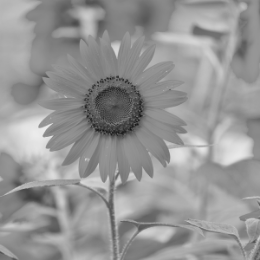According to the Intergovernmental Science-Policy Platform on Biodiversity and Ecosystem Services (IPBES), climate change is the third-leading contributor to the erosion of biodiversity after changes in land and sea use and the direct exploitation of organisms. It modifies the physical conditions of natural environments such as temperature and rainfall, and disturbs living organisms, whose ability to adapt to changes in their habitats is highly uneven. Normandy, in northern France, for example, is already experiencing such effects, with trees such as beech suffering from drought, and migratory birds visiting the region less frequently.
Aware of these various challenges, and enriched by the work of the Norman IPCC, the Region and its local partners have committed to implementing the Regional Biodiversity Strategy to address the mass extinction of biodiversity in the context of climate change and to place NBS at the centre of Normandy’s adaptation strategy.
The hedgerow and the bocage
The hedgerow is defined as a man-made linear landscape element composed of trees, shrubs and herbaceous plants forming several levels of vegetation. Variable in appearance, they provide a habitat or refuge for certain animal species. There are different types of hedges, determined by species and maintenance: shrub hedges, high-growing tree alignments, pollarded hedges, coppice hedges, multi-layered hedges, hedges with or without embankments, and more. Bocage is an emblematic landscape of Normandy, and the hedges that make it up play a key role in combating the risks associated with climate change and the destruction of living organisms.
Some hedges are veritable ecosystems, and their structure, composition and age will determine their ecological functionality. Hedges, with or without embankments, are the defining element of the bocage, an agricultural landscape composed of a mosaic of meadows and crops of varying size and shape. These hedges are often associated with woods and networks of ponds within the bocage. Hedgerows are characteristic of the bocage, but not all are included in this landscape. Hedgerows are also found in urban areas, for example.
Hedgerows also provide numerous ecosystem services and help to mitigate climate change by storing carbon via wood from trees and shrubs and enriching the soil with organic matter. They offer the potential to adapt to the impacts of climate change, too, providing shelter from the wind, heat, and sun; regulating water flows and limiting runoff; and mitigating soil erosion. Hedgerows thus help to preserve water resources and return their services to agriculture with improved animal welfare, fodder supplements, wood production, mulching, and more.
The history of bocage
Since the Middle Ages, man has created patchworks of orchards, groves, and fields in a wide variety of colours. These grounds also blend in with the existing wild landscapes: valleys, forests, and pastures. Hedges and bocage are thus the fruit of human intervention, and have developed particularly in western France, where hedges delimit plots of land and properties, provide shelter for livestock, and offer timber and firewood. Bocage is characteristic of the Normandy region, but also extends into Brittany, the Vendée and Maine.
At the beginning of the 20th century, the combined length of hedgerows in France was estimated at 2 million kilometres. From the Second World War onwards, the mechanization of agriculture and changes in farming practices were accompanied by the massive uprooting of hedges and trees, a phenomenon known as “le remembrement“. Nearly 800,000 km of hedgerows are thought to have disappeared as a result. Over the last few decades, hedgerows have continued to decline as farms as livestock farms have declined, even though it is this type of agriculture that has shaped bocage landscapes. Today, hedgerow erosion continues at a rate of just over 20,000 km per year.

Normandy has the third highest density of hedges out of the regions in mainland France, after Brittany and Pays de la Loire. It is home to an average of 57 metres of hedge per hectare. But at a département level, the Manche, located in Normandy, leads with 103 metres per hectare. Today, bocage is mainly located in the former Basse-Normandie (Manche, Orne, and Calvados departments), but also in Seine-Maritime (Pays de Bray) and in some areas of Eure. This distribution is not random. It is linked to the development of dairy cattle farming, which flourished in the mid-19th century and was adapted to the geomorphological context of the area.

In line with national trends, Normandy’s bocage continues to decline, despite hedgerow restoration and planting operations. Since 1947, the total length of hedgerows has fallen by 790 kilometers in Orne, 640 in Calvados and 1,200 in Manche. Bocage is an integral part of Normandy’s image, and the regional stakes in terms of conserving and protecting these bocage landscapes, as well as in terms of regional development, are high, and more so in the context of climate change.
A priority issue
The current priority in Normandy is to maintain and develop the existing hedgerow network. And in the context of climate change, many questions emerge: will local hedgerow species be able to maintain themselves in the post-2100 timeframe? Are there any to be preferred? Participate in the assisted migration of species?
For several years now, many local authorities have been committed to preserving and restoring hedgerows and bocage by offering planting programs for farmers and private individuals. Several départements provide subsidies for planting, as do water agencies. Since 2022, the Normandy region has been supporting a dozen local authorities in their hedgerow planting and bocage restoration programs, in conjunction with the local development of wood from sustainably managed hedgerows (AMI Opération Normandie Haies).

The Community of Municipalities of Cingal Suisse Normande is working more specifically on the theme of hedges and adapting to climate change as part of the European Life ARTISAN program. The local authority is a demonstrator site for the implementation of the bocage as a NBS to make its territory more resilient and respond to its economic, social and biodiversity challenges. The area is faced with soil erosion and runoff phenomena linked to heavy rainfall, and summer drought with thin soils having an impact on agricultural activity (the summer “forage gap” for livestock farmers).
The actions of a hedgerow planting and restoration program with farmers and private individuals, as well as monitoring the future of the hedgerows and species planted, and the biodiversity of both new and older hedgerows. In addition to this, the project aims to raise awareness among farmers and residents, as well as to set up a local production chain for wood from local hedgerows to supply the region’s wood-fired boilers. To ensure the sustainable management (wood, ecosystem services and biodiversity) of hedgerows on farms, the local authority is setting up sustainable hedgerow management plans with planting farmers and volunteers. In a global and transversal way, it wishes to launch a positive dynamic on its territory in favour of the hedgerow to reverse the current trend of regression.
In this article we show how nature-based solutions (NBS) can be useful in rural areas with examples from our work carried out with hedges and bocage in Normandy. This builds on our previous article, in which we defined NBS with the framework defined by UICN and presented Normandy’s work within RESIST in urban areas.












